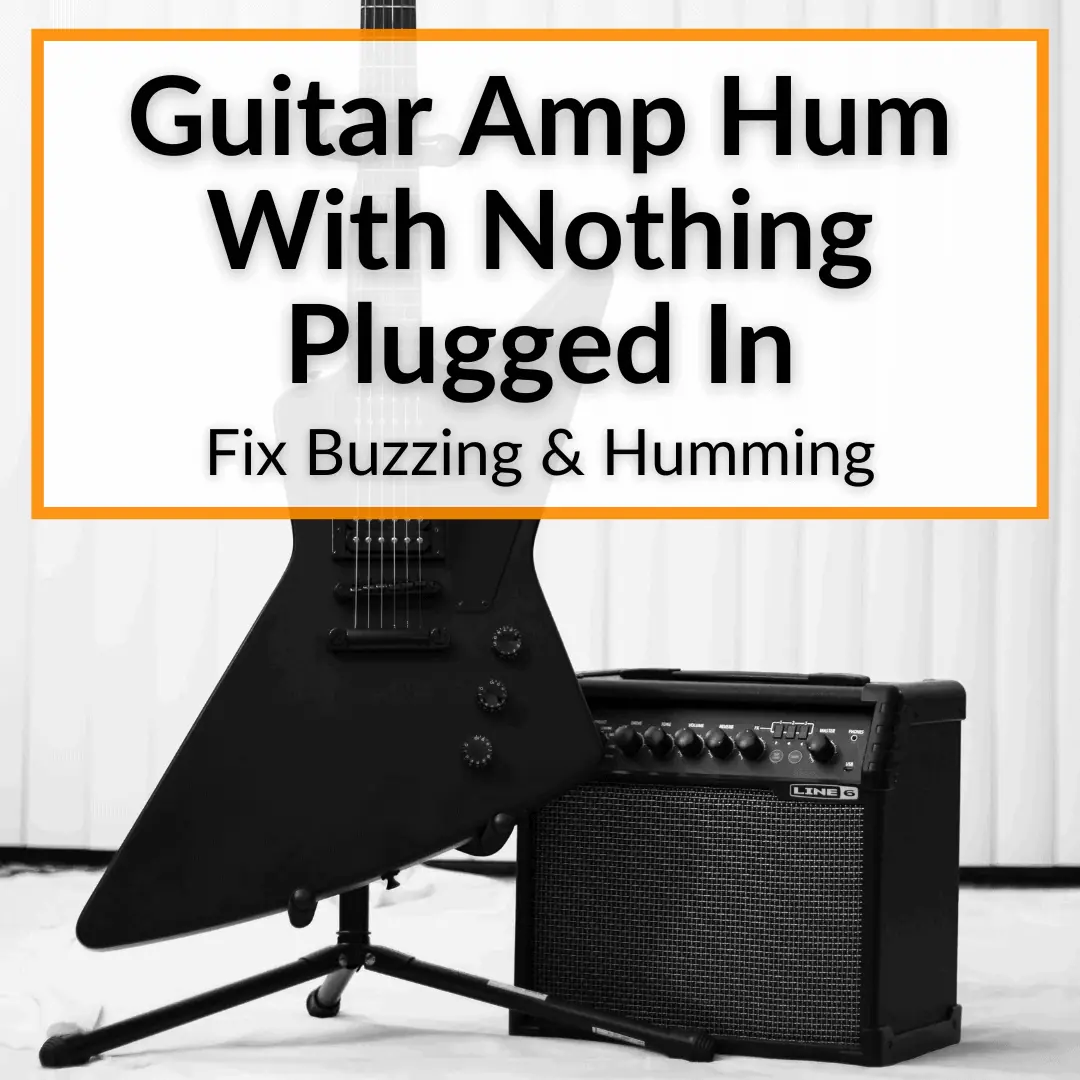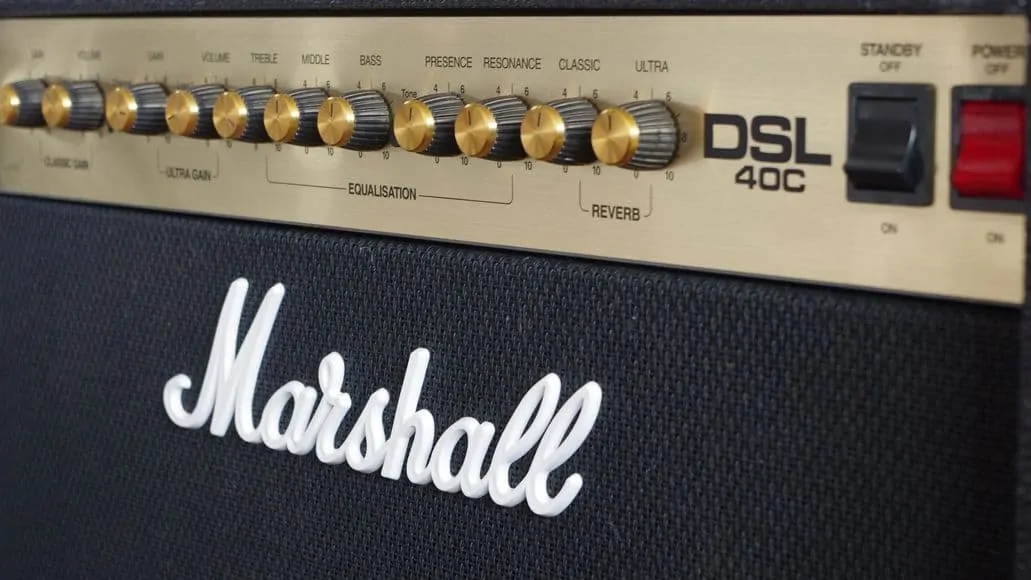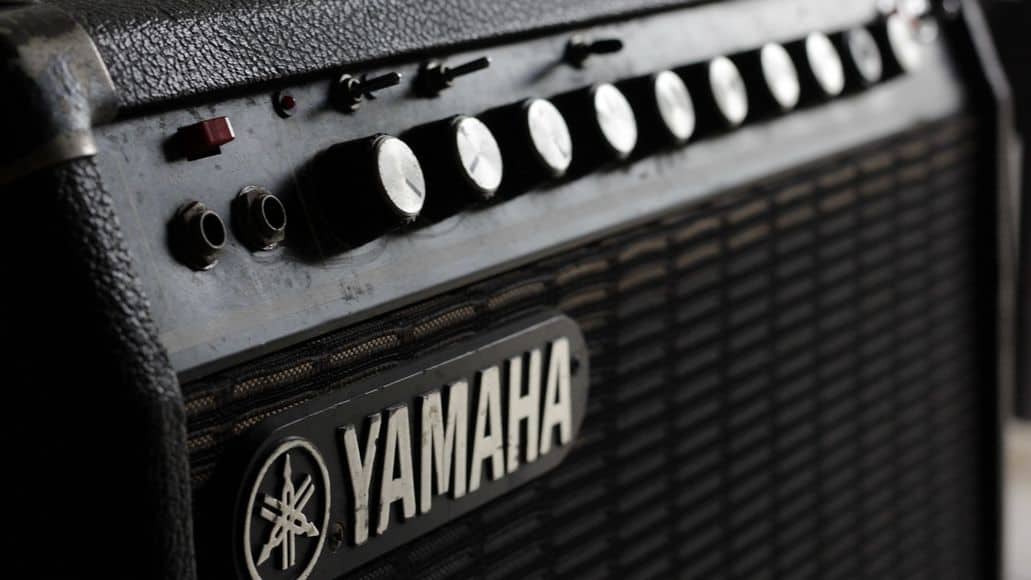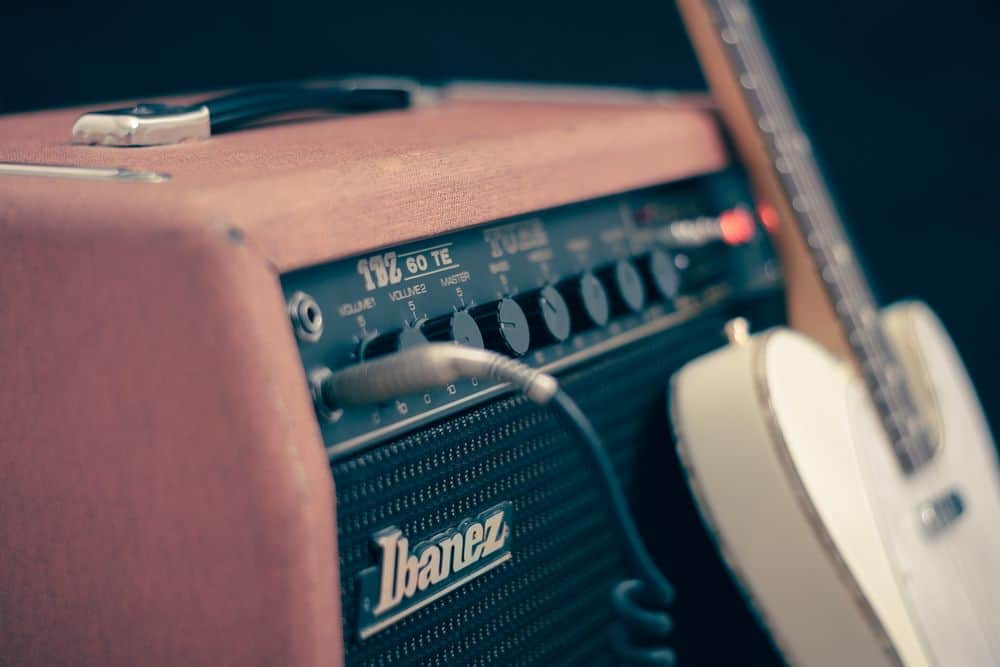 Zero noise is impossible.
Zero noise is impossible.
Even the best guitar amplifiers will always hum.
But it should be a slight hum that you only hear when you turn up the dials.
If the hum becomes annoying, you have a problem.
The good news is that it is an easy fix in most cases.
Keep reading for a list of the most common causes of guitar amp hum with nothing plugged in, along with how to fix the problem.
If none of the issues listed here are causing your amp buzzing or humming, then you will unfortunately need to have a professional look at it.
Table of Contents
Amp Hum With No Input
An amplifier can hum, or make other noises like buzzing, for a variety of reasons. Common causes of amp hum can be the quality of the device itself, loose parts, the quality of the tubes, or whether the amplifier is connected to a grounded or ungrounded power supply.
Many musicians call the manufacturer immediately or pay a technician to fix the problem. But most of the time, it is an easy fix that you can do yourself. Let’s take a look at some common causes of amp hum and how to fix them.
Common Causes Of Guitar Amp Humming Or Buzzing

When the amp begins to hum, the sound is very distinctive (similar to a quarter rolling across a tile floor). In some cases this hum is simply the result of the settings and you can easily eliminate it by lowering the gain.
Both other times, the hum can indicate a problem that could be more dangerous to both the equipment and you. Bearing that in mind, here are the most common issues that cause a guitar amp to hum or buzz and how to fix them.
Loose Cabinet Or Chassis Screws
Many times, the problem is caused by something as simple as a small loose part. You’ll want to check and make sure that all cabinet and chassis screws are secure.
Turn on the amp and try applying pressure to various parts to see if you can find a location that is loose that could be causing the hum. If you press a part and the buzzing stops, narrow your search for loose parts to that area.
Ground Loop

Sometimes the hum can come from a ground loop, which occurs in a room with many different outlets, extension cords, and light towers. Unplug the amplifier from the grounded or extension socket and plug it directly into the wall.
If the hum continues, place a raise/lower switch on the male end of the cable. The switch turns a three-prong plug into a two-prong one. If the hum continues, then the problem is not with the wiring or the floor.
Grounding
Connecting an amplifier to a grounded outlet, apart from being beneficial for noise reduction, is also basic in terms of safety. In this way, we will avoid a possible electric shock.
If the amp is a tube amplifier, it would not be a simple discharge. It would be more like being bitten on the hand. So if you have a tube amp, you should never use it with an ungrounded connection.
There are various electrical risks when it comes to a tube amplifier. These types of devices can play very heavy jokes, if you do not respect them. But nothing will happen if you take basic precautions.
If you do not have a connection with a ground nearby, you will need to use a power strip or extension cord with a ground connection to reach the appropriate socket.
If the strip does not have a ground connection, the circuit to ground is cut. That means you will not have achieved anything. You need a power strip with a ground connection that goes to a wall outlet that also has a ground connection.
Faulty Resonant Tank
Unplug the resonant tank (circuit) from the amp. Turn the amplifier back on. If the hum stops, you need a professional to test and repair your resonant tank.
Worn Out Preamp Tubes

Most likely it is the preamp tubes that are causing the noise. These tubes wear out faster than post-amp tubes because guitarists often get their dirty sound from them.
Turn the amp on and set the “pre” knob to zero. Turn the “post” knob to six and listen to see if you can hear the hum. If the hum stops, then you need to replace the preamp tubes.
Worn Out Post-Amp Tubes
The post amp tubes could also be causing the issue, though it is less likely than worn our pre tubes. To test the post tubes, turn the “post” knob on the amp to zero and the “pre” knob to six.
If the hum continues, you need to replace both tubes. If the hum stops, you just need to replace the post-amp tubes. If your amp tubes don’t have “pre” and “post” knobs, check to see if the hum stops when you turn the “gain” knob off. If it stops, you probably have a bad tube.
What If None Of These Fixes Eliminated The Humming?
If nothing has helped so far and you need to reduce noise from your amplifier due to the strong distortion or saturation load, the only thing that remains for you to do is to install a noise gate in your equipment.
These devices cut any sound above a specific volume range. But this can affect the decay of the notes, and cut them off too soon. We advise lowering the range of action of the noise gate as much as possible.
You want just enough to attenuate the background noise. In this way, your will prevent the gate from affecting your own notes as little as possible, since this is more important than the noise itself.
Why Is My Amp Buzzing: Additional Tips

Here is some additional advice while troubleshooting your amp by going through the possible causes of amp humming above.
- If the hum continues after you’ve followed all the steps, consider having your speaker professionally looked at. It may need to be replaced.
- Skip the steps involving the tubes, if you have a solid-state amp.
- In some cases, a grounded or three-prong plug can cause a shock when you touch the strings or metal parts of the guitar or amplifier. Raising the ground with a switch might fix the hum problem in a particular room, but it’s best to avoid using it.
Reducing amplifier noise is essential in many cases, especially if your equipment is facing in the opposite direction. Many factors can cause buzzing or annoying noises which interfere with the electrical circuit of guitar equipment.
The electrical circuit starts at the guitar pickups, and continues through the wiring and pedals to the amplifier. This circuit can also be affected by the power supply of the pedals, and the type of power supply connection of your amplifier.
All these factors are important when it comes to reducing interference. If we neglect any of these components noise will appear, although zero noise is also not possible.
There will always be a slight hum that will increase as you increase the volume and especially distortion or gain. But it should be slight and not reach the level of being annoying.
Guitar Amp Hum Nothing Plugged In: Final Thoughts
Hopefully one of the issues listed above was causing your guitar or bass amp hum with no input. As mentioned, most cases of a guitar or bass guitar amp humming or buzzing despite nothing being plugged in come down to one of the causes listed above. But not all.
If you have checked all of these issues and none were the reason your guitar amp is making noise, it is probably a more serious problem. Your only recourse will be to take it to a professional to have it repaired.
Power tubes will always “wear out” faster than pre-amp tubes assuming no damage. Much more power flow and heat going through the plate on power tubes leaves them with a lifetime of hundreds of hours. Pre-amp tubes will usually last more than a thousand hours.